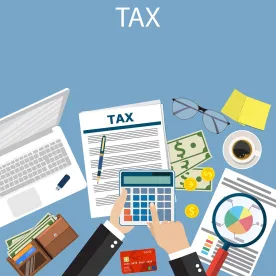Proposed regulations under Sections 863(b) and 865(e)(2) implement changes by TCJA to section 863(b), the primary sourcing provision for income from the sale of inventory produced by a taxpayer without and sold within the United States, or produced by the taxpayer within and sold without the United States. The proposed regulations also provide guidance under section 865(e)(2), a re-sourcing provision that applies when a nonresident’s foreign-source income is attributable to an office or fixed place of business in the United States. However, in current form, the clash between the position announced in the proposed regulations and the taxpayer positions to the contrary, together with the aggressive proposed effective date, likely will create controversy between the IRS and affected taxpayers.
IN DEPTH
The US Treasury and the Internal Revenue Service issued proposed regulations revising the rules for sourcing income under sections 863 and 865 of the Internal Revenue Code. The proposed regulations were issued to implement changes made by the Tax Cuts and Jobs Act (TCJA) to section 863(b), the primary sourcing provision for income from the sale of inventory produced by a taxpayer without and sold within the United States, or produced by the taxpayer within and sold without the United States (Section 863(b)(2) Sales). The proposed regulations also provide guidance under section 865(e)(2), a re-sourcing provision that applies when a nonresident’s foreign-source income is attributable to an office or fixed place of business in the United States.
Section 863(b) – Sourcing of Income from the Sale of Inventory Produced outside of the US and Sold within the US (or Produced within the US and Sold outside of the US)
Income from the sale of inventory is generally sourced to the location of title and risk transfer. However, if the inventory sold was also produced by the taxpayer, under the pre-TCJA section 863, income from such sales was first apportioned between income attributable to production activity and income attributable to sales activity. The portion of income attributable to sales activity was sourced under the title transfer rule, but the portion attributable to production activity was sourced based on the location of the assets of the taxpayer used to produce the inventory (“production assets”). Thus, an export sale by a manufacturer generally achieved 50% foreign-source treatment, based on title and risk being transferred outside the United States. This could be advantageous from a foreign tax credit planning perspective.
Section 14303 of the TCJA added a sentence to the flush language of section 863(b) providing that income from the sale of inventory produced by a taxpayer would be sourced “solely on the basis of the production activities with respect to the [inventory].” That is, under the post-TCJA section 863(b), there is no longer any need for apportionment of the sales income between production activity and sales activity. Thus, an export sale by a manufacturer now generally will produce 100% US-source income. This typically will be disadvantageous from a foreign tax credit planning perspective, although the sales should benefit from the foreign derived intangible income (FDII) regime also added in TCJA.
To reflect the post-TCJA section 863(b), the proposed regulations would substantially revise Treas. Reg. § 1.863-3(b), the provision that applied the pre-TCJA apportionment between income attributable to production activity and income attributable to sales activity. The three apportionment methods (the 50/50 Method, IFP Method, and Books and Records Method) are removed and Proposed Treas. Reg. § 1.863-3(b) now simply reiterates the newly-added sentence in section 863, stating that income from Section 863(b)(2) Sales is sourced “solely on the basis of the production activities with respect to the inventory.”
The proposed regulations left the rule under section 863(b) largely intact, which sources income from Section 863(b)(2) Sales according to the location of a taxpayer’s production assets. Thus, for example, if a taxpayer’s production assets are located entirely outside of the United States, then all of such income is foreign-source under section 863(b), even if title to the inventory passes within the United States on the sale.
Although the proposed regulations reflect the post-TCJA section 863(b)’s exclusive reference to production activity, they do not provide any guidance regarding the circumstances in which a nonresident will be treated as producing the inventory it sells or what activities are considered as “production activities” with respect to inventory that it sells. The current regulations provide only that “production activity” is “activity that creates, fabricates, manufactures, extracts, processes, cures, or ages inventory” and that only production activity “conducted directly by the taxpayer” is taken into account for purposes of sourcing income from production activity The proposed regulations do not elaborate on these provisions, instead simply stating that they “do not otherwise modify the rules . . . for determining the location or existence of production activity, a topic the Treasury Department and the IRS may address in future guidance.” Thus, general tax principles for determining when a taxpayer is considered as manufacturing or producing property it sells should provide guidance for purposes of determining when a taxpayer is considered as producing property it sells and what activities are considered as production activities for purposes of section 863(b).
Section 865(e)(2) – Re-sourcing Rule for a Nonresident’s Foreign-Source Income Attributable to a US Office or Place of Business
In addition to revising the regulations under section 863, the proposed regulations add new regulations under section 865 to address the application of sections 863(b)(2) and 864(c)(5) in determining the foreign-source income subject to section 865(e)(2).
Section 865(e)(2) provides a special re-sourcing rule that, if a nonresident maintains an office or other fixed place of business in the United States (US FPB), then income from any sale of personal property (including inventory) attributable to the US FPB is sourced in the United States. Section 865(e)(3) states that, to determine whether income from a sale of inventory is attributable to a US FPB, “[t]he principles of section 864(c)(5) shall apply.” As relevant here, section 864(c)(5)(B) provides that income is attributable to a US FPB if the US FPB is a “material factor” in the production of such income and “regularly carries on activities” that generate such income. Furthermore, section 864(c)(5)(C) generally provides that the amount of income from sales of inventory attributable to a US FPB is limited to the amount of such income that is properly allocable to the US FPB.
The proposed regulations interpret section 864(c)(5)(C)’s reference to an amount of income that is properly allocable to a US FPB to mean the amount of such income that is allocable to sales activity, as opposed to the amount allocable to production activity. Thus, the proposed regulations provide that, if a nonresident maintains a US FPB, with respect to income from the sale of inventory that is produced outside the United States by the nonresident, generally 50% of the income is treated as sales income properly allocable to the US FPB, and the remaining 50% of the income is treated as production income sourced under section 863(b). In other words, notwithstanding the fact that a nonresident produces inventory entirely outside of the United States, if its US FPB is a material factor in earning the income associated with a sale of such inventory, then under the proposed regulations the 50/50 method applies to apportion such income between production activity and sales activity. The proposed regulations allow taxpayers to use the books and records method to apportion income in lieu of the 50/50 method.
With respect to income from the sale of inventory that is purchased by the nonresident and not sourced under section 863(b), the proposed regulations require that the entire income be properly allocable to the US FPB under section 865(e)(2). The books and records method is not available for purchased inventory property.
Inapplicability of Final Clause in Section 864(c)(5)(C) for Purposes of Section 865(e)(2)
The Preamble to the proposed regulations contains an extensive explanation about why the drafters concluded it was appropriate to maintain apportionment between production and sales activity when a foreign taxpayer maintains a US FPB that participates in sales of inventory produced outside of the United States, even though such apportionment is no longer necessary in the general sourcing rule under section 863(b). The Preamble notes that section 865(e)(2) applies “notwithstanding any other provisions of [sections 861 through 865],” and that the TCJA did not amend section 865(e)(2) when it amended section 863. The Preamble pointed in particular to footnote 1519 from the Joint Committee on Taxation’s Bluebook for the TCJA, which suggests that, “[w]hile sections 863(b) and 865(e)(2) may appear to conflict” when a foreign taxpayer produces property outside of the United States for sale within the United States and a US FPB materially participates in the sale, “in such cases the income [from the sale] generally is partly US-source and partly foreign-source.”
The Preamble also rejects a contrary argument that is based on the final clause in section 864(c)(5)(C). That clause provides that income from the sale of property that is “properly allocable” to a US FPB can be no greater than the amount of such income that would have been US-source income if the sale had taken place in the United States. Taxpayers and advisors had concluded that, since income from the sale of inventory produced by a taxpayer is sourced solely based on production activity under section 863(b), the application of the final clause of section 864(c)(5)(C) to section 865(e)(2) means that none of the income would be allocable to a US FPB under section 865(e)(2) when inventory is produced by a taxpayer entirely outside of the United States. The Preamble disagrees with this interpretation, stating that it would “inappropriately construe a provision (section 865(e)(2)) intended as a separate restriction on the source rule under section 863(b)(2) . . . to be determined solely by reference to the terms of such source rule itself (rather than at most in a manner giving effect to both rules).” Further, “such a construction would cause section 865(e)(2) to have no effect with respect to sales of inventory that are also described in section 863(b)(2), contrary to longstanding statutory construction principles,” explained by the Preamble.
The proposed regulations currently do not carry the force of law. However, the Treasury and IRS indicated in the Preamble that the proposed regulations under section 865(e)(2) reflect their interpretation of the current law, and the regulations are proposed to be effective for taxable years ending after the publication of the proposed regulations in the Federal Register (December 30, 2019). Therefore, if the proposed regulations are finalized in their current form the IRS may seek to apply the rules retroactively to income from the sale of inventory earned in the 2019 tax year, and indeed might take the position described in the proposed regulations even with respect to earlier years simply as an interpretative matter. The clash between the position announced in the proposed regulations and the taxpayer positions to the contrary, together with the aggressive proposed effective date, likely will create controversy between the IRS and affected taxpayers.
Conclusion
The section 863(b) proposed regulations require sourcing of Section 863(b)(2) Sales based solely on the location of production activities, consistent with section 863(b)(2), as amended. Thus, income from Section 863(b)(2) Sales would be foreign source under section 863(b)(2) if the production activities are entirely outside the United States. However, under the section 865(e)(2) proposed regulations, which turn off the application of the final clause of section 864(c)(5)(C), a portion of such income would still be re-sourced as US-source income subject to US federal income tax if (i) the nonresident maintains a US FPB and (ii) such US FPB is a material factor in generating the income.
As a result, in applying section 865(e)(2) in a fact pattern that potentially implicates the general sourcing rule of section 863(b), for a nonresident to avoid US-source income under the proposed regulations, it is necessary to establish that the nonresident does not have a US FPB or, if it does, such US FPB is not a material factor in generating the income.





 />i
/>i

